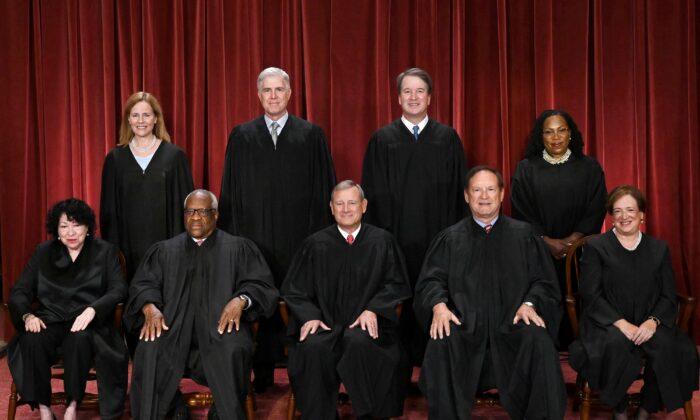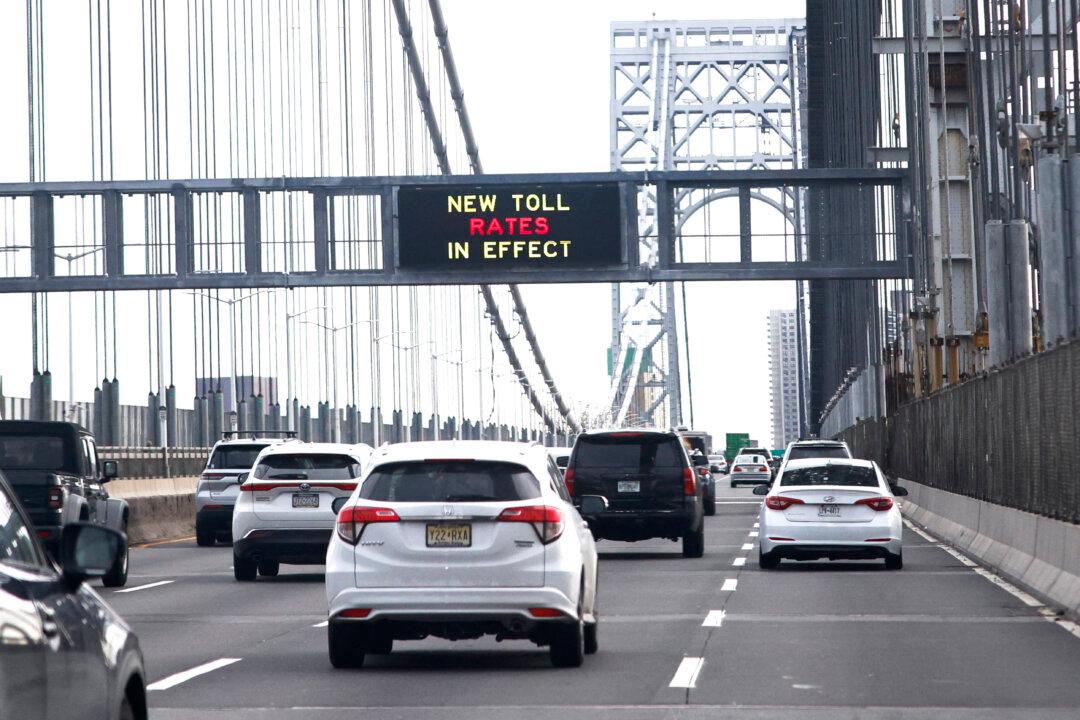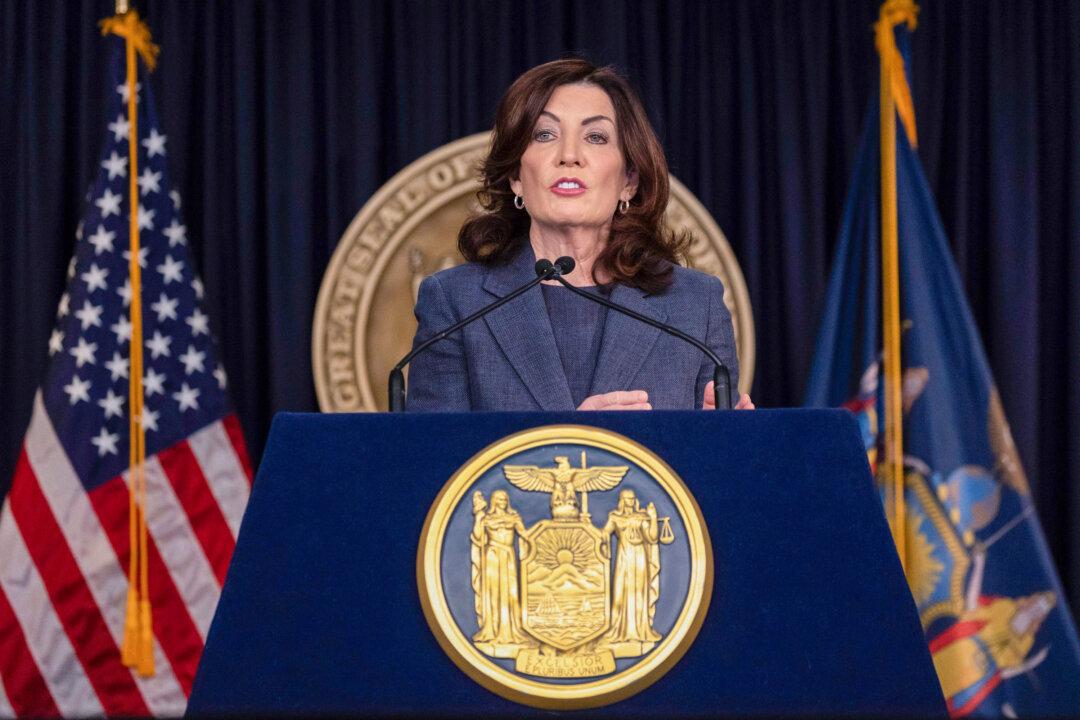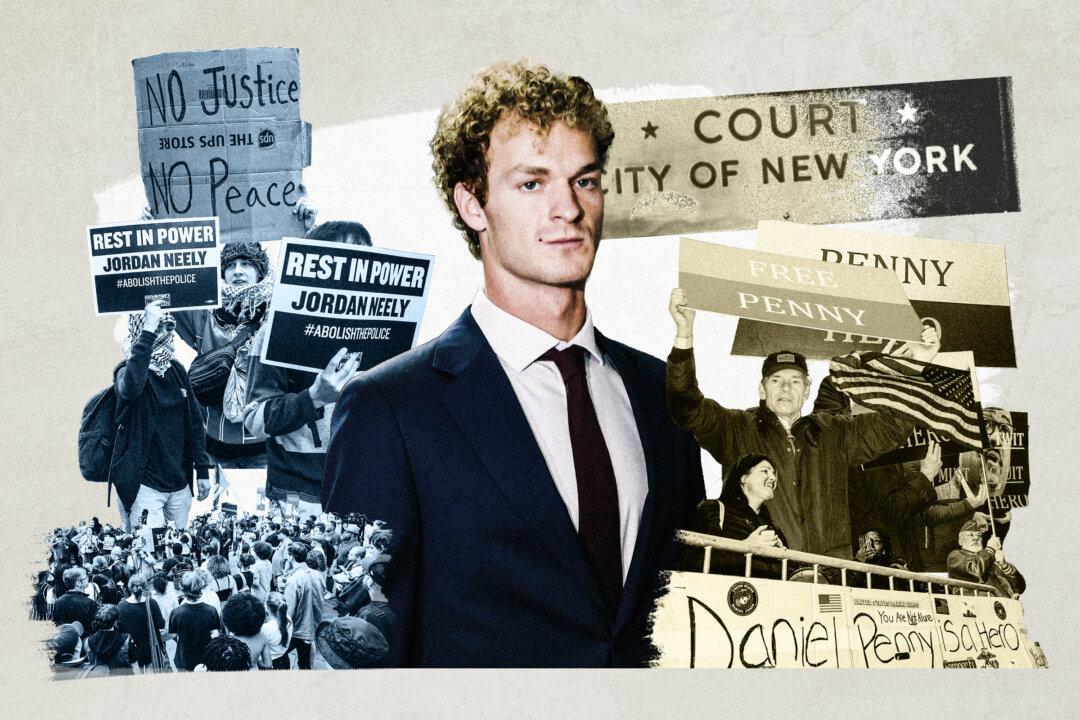The new session of the Supreme Court of the United States is likely to issue rulings and decisions that will have a lasting impact on university admissions and the rights of states and local communities vis à vis federal prerogatives and power, according to legal experts.
The most hotly anticipated decision of the new term involving affirmative action policies at the nation’s top schools is likely to be a 6-3 split, with Republican and Democrat appointees on opposing sides of the question. This and other rulings are all but certain to upset many liberals who cherish the idea of the Constitution as a “living document” adaptable to their political needs, while solidifying the court’s reputation as one with a distinctly conservative bent, the experts said.
In contrast to past courts, the current one may not be prone to the phenomenon known as the “greenhouse effect” in which justices appointed to the court gravitate to a bloc other than the one with which they were originally identified, according to one legal analyst.
The Supreme Court’s June ruling in the case of Dobbs v. Jackson Women’s Health Organization, which overturned Roe v. Wade’s legalization of abortion throughout the United States, touched off outrage among liberals and led mainstream media publications to run repeated editorials and opinion pieces questioning the legitimacy of the court.
But it would be a mistake to assume that the controversy in which the court is and will continue to be embroiled is a function purely of its Dobbs ruling, when so many other closely watched cases are on the docket, believes Mark Graber, a professor of law at the University of Maryland.
Turn to the Right
Graber said he predicts the court “to continue a sharp right turn” in coming months, a view shared by other legal experts who do not see a crisis of confidence so much as a solidification of the court’s identity as an institution favoring an originalist legal philosophy that does not sit well with the policies of the Biden administration or past Democrat administrations.“There are a few major cases coming up. A big one involves affirmative action, and there’s also a case involving voting rights. And I do think there will be a conservative tilt,” Josh Blackman, a professor at the South Texas College of Law, told The Epoch Times.
Blackman does not credit arguments that the court has jeopardized its legitimacy by issuing rulings more consistently favorable to one side of the political divide than the other.
“I don’t put much weight in the ‘legitimacy’ argument. For the most part, legitimacy is what progressives want it to be, it’s not a real thing,” he said.
Highly Anticipated Rulings
The race-based affirmative action policies used in admissions at two of the nation’s most prestigious schools, the University of North Carolina at Chapel Hill and Harvard University, are subject to challenges in cases on which the Supreme Court is soon expected to rule.The policies of both schools are the target of lawsuits by Students for Fair Admissions, an organization that believes that Asian and white applicants suffer unfair disadvantages and that the universities’ policies constitute illegal discrimination.
The approach taken by the plaintiffs marks a shift from the stances articulated by past challengers of race-based admissions, Akram Faizer, a professor at Duncan School of Law at Lincoln Memorial University in Knoxville, Tennessee, told The Epoch Times.
“Right now, the law is that you can use race in admissions to achieve a diverse student body. Previously, all the litigation has been based on the equal protection clause of the Fourteenth Amendment. But now it invokes Title 6 of the Civil Rights Act of 1964, which applies to private colleges and universities, and the argument is that both schools are using race to suppress the number of Asian-American applicants,” Faizer said.
This represents something of a revolution in legal thinking, applying, as it does, certain long-established protections in business, employment, and housing to the realm of university admissions, and not just in the state, or public, domain.
“You’re protected from race and sex discrimination under Title 6 of the Civil Rights Act, but Title 6 also enables you to require nondiscrimination by colleges and universities that are not state actors,” Faizer commented.
Setting aside questions of jurisdiction and public versus private actors, there are basic questions of fairness and nondiscrimination at play in the twin lawsuits, Faizer believes.
“The schools are being a little dishonest about it, in terms of the impact on Asians of the admissions process. On one of the affidavit’s evidence, it’s significantly harder to get in if you’re an Asian candidate rather than black or Hispanic,” he said.
While some of the decisions coming up this term may yield 9-0 rulings, the affirmative action cases are likely to produce votes split along the commonly perceived lines, with the conservative block—Justices John Roberts, Samuel Alito, Clarence Thomas, Neil Gorsuch, Brett Kavanagh, and Amy Coney Barrett—opposing the universities’ policies and the liberal judges appointed by Democrat presidents, Justices Elena Kagan, Sonia Sotomayor, and Ketanji Brown Jackson, in favor.
Voting Rights and Clean Water
The case of Merrill v. Milligan, for which the court heard arguments on Oct. 4, presents a challenge, based on Section 2 of the Voting Rights Act, to redistricting in Alabama that has allegedly shifted black voters heavily into one Congressional district while reducing their presence in a number of others, thereby sharply limiting the ability of black voters to elect numbers of representatives consistent with their overall share of the state’s population. In her analysis on SCOTUSblog, reporter Amy Howe wrote that in her assessment, it is likely that the court will end up throwing out a district court’s blocking of the implementation of the new electoral map.But, again, the vote is likely to be a 6-3 split along political lines, Faizer believes, much to the disappointment of progressives who favored the preexisting electoral map. “I think liberals like to prefer the status quo,” he said. The question is complicated, Faizer acknowledged, because having a higher concentration of members of a given demographic group in one district can make it easier for them to elect the candidate of their choice, while limiting the competitiveness of the same demographic as a voting bloc in other districts.
The solicitor general of the state of Alabama, Edmund LaCour, takes a strong position, arguing that the redistricting is discriminatory neither in conception nor in practice, a stance with which Kagan, an Obama appointee and one of the most outspoken liberals on the Supreme Court, disagrees, as does Biden-appointed Jackson.
“The plaintiffs here claim that the Army Corps of Engineers has improperly subjected their property, which is an isolated piece of land not adjacent to the waterway, to its jurisdiction and required them to get a 404 permit, which takes several years and costs hundreds of thousands of dollars,” Faizer explained.
No ‘Greenhouse Effect’
Besides the tendency of the Republican appointees on the court to vote together, and the likelihood that it will continue in coming months, one factor buttressing the current court’s reputation for conservatism is the absence of a phenomenon that has influenced the outcome of rulings in the past, Faizer argued. This is known as the “greenhouse effect,” whereby judges originally thought to emblematize a given judicial philosophy at the time of their confirmation hearings drift in a different direction over time. That was some people’s perception of David Souter, tapped for the court by then-President George H.W. Bush in 1990 to replace retiring Justice William J. Brennan, Jr.“This allegation was also made of Justices Sandra Day O’Connor and Anthony Kennedy, who were Reagan appointees. And Justice Harry Blackmun, appointed by President Nixon, made a remarkable transition from a conservative businessman and lawyer to one of the most liberal justices on the court,” Faizer said.
It is useful to maintain perspective and remember that for all the partisan division, the judges on the court also agree on a great many things, he suggested.
“To be honest, I think that some of the people who caricature the court are being unfair in calling the justices politicians. They’re people who try to do their best. There are so many cases going before the court that are going to be 9-0,” Faizer added.
The Epoch Times has reached out to the Supreme Court for comment.





